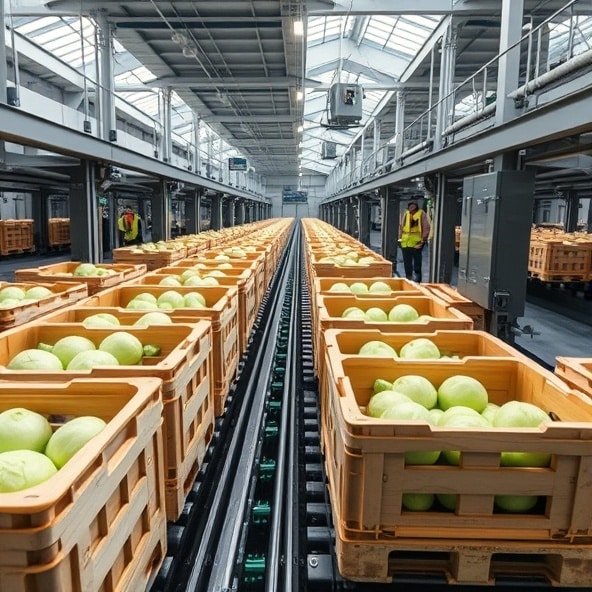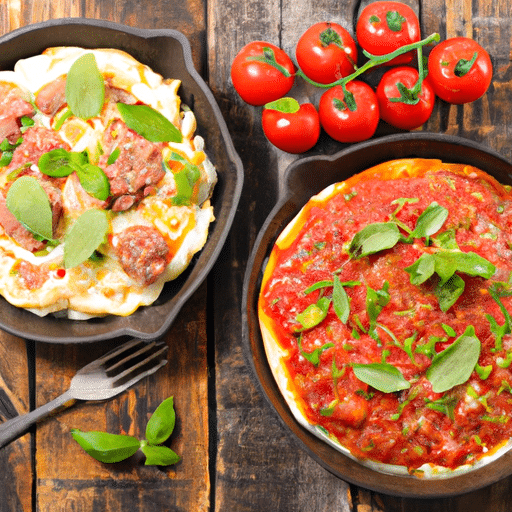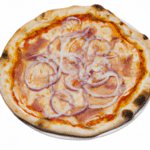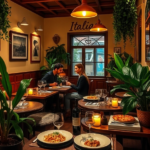Pizza and Pasta: Odkryj smak autentycznej kuchni włoskiej
Pizza and Pasta: Discover the Authentic Flavors of Italian Cuisine
A Brief History of Pizza and Pasta in Italy
Italy is known for its rich culinary heritage, and two of its most iconic dishes are pizza and pasta. These beloved foods have a long history, dating back centuries. It is believed that pizza originated in Naples, Italy, in the late 18th century. Initially, it was a simple dish made with dough topped with tomatoes, mozzarella cheese, and basil, known as the Margherita pizza.
Pasta, on the other hand, has an even longer history in Italy. Its origins can be traced back to ancient Rome, where it was a staple food for the citizens. Over the centuries, pasta has evolved and diversified, with various shapes and flavors being created. Today, Italy is home to countless pasta dishes, each with its own unique characteristics and regional variations.
Both pizza and pasta have become immensely popular not only in Italy but around the world. They have been embraced by people of all cultures and have become staple dishes in many households. Let’s dive deeper into the art of making traditional pizza and unravel the secrets of perfect pasta.
The Art of Making Traditional Pizza: From Dough to Toppings
Traditional pizza making involves several key elements that contribute to its authentic flavor. It all starts with the dough, which is made with flour, water, yeast, salt, and olive oil. The dough is then left to rise, allowing it to develop a light and airy texture.
Once the dough is ready, it is carefully rolled out and topped with a variety of ingredients. In Italy, the toppings can vary depending on the region, but some popular choices include tomatoes, mozzarella cheese, basil, and various types of cured meats. The pizza is then baked in a wood-fired oven, which gives it a crispy yet chewy crust and allows the flavors to meld together.
The process of making traditional pizza is not just about the ingredients, but also about the technique. Skilled pizzaiolos (pizza makers) have honed their craft over years of practice, mastering the art of stretching the dough, applying the toppings evenly, and baking the pizza at the perfect temperature. This attention to detail is what sets authentic Italian pizza apart from its imitations.
Unraveling the Secrets of Perfect Pasta: Flavors and Shapes
Pasta is a versatile dish that can be prepared in countless ways, using a variety of flavors and shapes. The secret to perfect pasta lies in the quality of the ingredients and the cooking technique.
In Italy, pasta is typically made with durum wheat and water, although some variations may include eggs. The dough is kneaded until smooth and elastic, then rolled out and cut into various shapes. From long strands of spaghetti to small shells of conchiglie, each pasta shape has its own unique texture and holds sauce differently.
When cooking pasta, it is important to use a large pot of salted boiling water. This ensures that the pasta cooks evenly and doesn’t stick together. The cooking time depends on the type of pasta and personal preference. Italians prefer their pasta al dente, which means it is cooked until it is firm to the bite.
The choice of sauce is another crucial aspect of perfect pasta. From rich tomato-based sauces to creamy carbonara, the sauce should complement the pasta shape. It is important to balance the flavors and ensure that the sauce coats the pasta evenly. Fresh herbs, grated cheese, and a drizzle of olive oil can add the finishing touches to a delicious plate of pasta.
Regional Specialties: Pizza and Pasta Beyond Margherita and Carbonara
While the Margherita pizza and carbonara pasta are undoubtedly popular, Italy has a vast array of regional specialties that go beyond these classics. Each region has its own unique culinary traditions and ingredients, resulting in a wide variety of flavors and combinations.
In the northern regions of Italy, like Lombardy and Piedmont, you’ll find dishes such as risotto alla Milanese and agnolotti pasta. These dishes incorporate ingredients like saffron and truffles, which are abundant in the area.
Central Italy, including Tuscany and Umbria, is known for its hearty and rustic cuisine. Pappa al pomodoro, a tomato and bread soup, and pici pasta with wild boar ragu are just a few examples of the regional specialties you can find here.
Heading south to Campania, the birthplace of pizza, you’ll discover unique flavors like Neapolitan-style pizza with buffalo mozzarella and pastiera napoletana, a traditional Easter cake made with ricotta cheese and wheat berries.
Exploring the regional specialties of Italy allows you to truly experience the diversity and depth of Italian cuisine. It’s a culinary journey that will delight your taste buds and expand your appreciation for pizza and pasta.
The Perfect Pairings: Italian Wines and Desserts
Italian cuisine is incomplete without the perfect pairings of wine and desserts. Italy is renowned for its wide variety of wines, each with its own distinct characteristics and flavors. From the robust red wines of Tuscany to the sparkling prosecco of Veneto, there is a wine for every palate.
When it comes to pairing wine with pizza and pasta, there are a few general rules to keep in mind. For tomato-based pizzas, a lighter red wine such as Chianti or Barbera complements the acidity of the tomatoes. White pizzas, on the other hand, pair well with a crisp white wine like Pinot Grigio or Sauvignon Blanc.
With pasta, the choice of wine depends on the sauce. A rich ragu calls for a full-bodied red wine like Sangiovese or Montepulciano, while a seafood pasta is best paired with a light and refreshing white wine such as Vermentino or Trebbiano.
No Italian meal is complete without dessert, and Italy offers a wide range of sweet treats to satisfy your cravings. From the creamy tiramisu to the delicate cannoli, each region has its own specialties. Pair these delectable desserts with a sweet dessert wine like Moscato d’Asti or Vin Santo for the perfect ending to your Italian feast.
Beyond Tradition: Contemporary Trends in Pizza and Pasta
While traditional pizza and pasta continue to reign supreme, Italy is also witnessing a rise in contemporary trends and innovative variations of these beloved dishes. Chefs and food enthusiasts are experimenting with unique flavors, ingredients, and techniques to create exciting new dishes.
One emerging trend is the use of alternative flours and grains for pizza and pasta dough. Spelt, whole wheat, and gluten-free flours are being incorporated, offering healthier and more diverse options. Creative toppings and fillings, such as goat cheese and honey or butternut squash and sage, are also gaining popularity.
In addition to the dough and toppings, the cooking method is also evolving. Wood-fired ovens are still beloved, but you can now find pizza cooked on charcoal grills or even in high-tech pizza ovens that mimic the intense heat of a traditional pizza oven. Pasta is also being cooked in unconventional ways, such as using sous vide techniques to achieve precise textures.
These contemporary trends in pizza and pasta bring a fresh perspective to Italian cuisine, appealing to both traditionalists and adventurous food lovers. They showcase the endless possibilities and creativity that can be found in the world of Italian food.
Exploring Italian Pizzerias and Pasta Shops: A Culinary Journey
If you want to truly experience the authentic flavors of Italian pizza and pasta, there’s no better way than to explore the pizzerias and pasta shops of Italy. From bustling street vendors to cozy family-run trattorias, there are countless establishments waiting to be discovered.
In Naples, the birthplace of pizza, you can savor a classic Margherita pizza at renowned pizzerias like Da Michele or Sorbillo. Rome offers a taste of traditional Roman-style pizza at Pizzarium or Antico Forno Roscioli. Florence is known for its rustic Tuscan cuisine, and you can find delicious homemade pasta at Trattoria Sabatino or Trattoria Mario.
Venturing off the beaten path can lead to hidden gems in smaller towns and villages. Local recommendations and online reviews can help you find the best places to indulge in authentic Italian cuisine. Immerse yourself in the culture, flavors, and traditions of Italy as you embark on this culinary journey through pizzerias and pasta shops.
In conclusion, pizza and pasta are not just simple dishes; they are a representation of Italian culture and traditions. From their humble origins to their worldwide popularity, these culinary delights continue to captivate and delight people of all ages. Whether you’re enjoying a classic Margherita pizza or a hearty plate of carbonara, each bite transports you to the streets of Italy. So, take a bite and savor the authentic flavors of Italian cuisine.
Artykuł „Pizza and Pasta: Odkryj smak autentycznej kuchni włoskiej” jest doskonałym przewodnikiem dla miłośników włoskich smaków. Zapraszamy do kliknięcia w link, aby dowiedzieć się więcej o różnorodności i tradycji kuchni włoskiej: https://semolino.pl/.









































